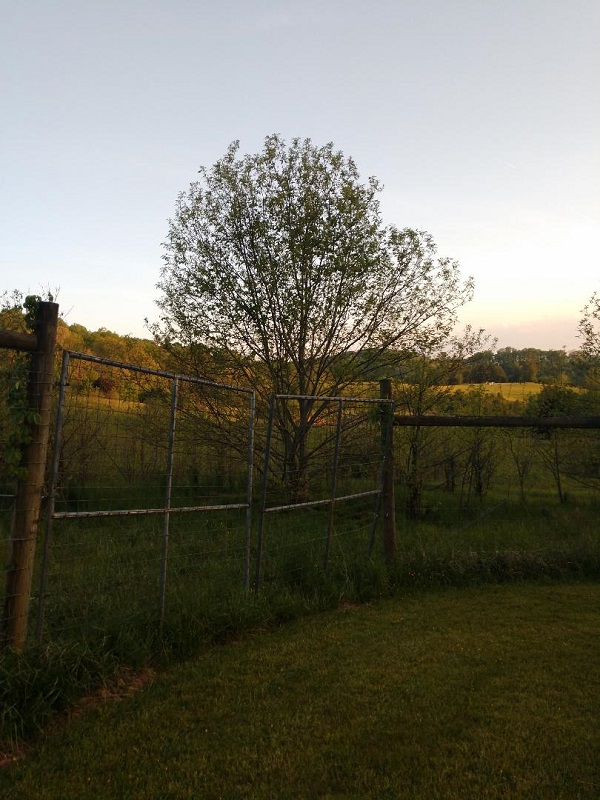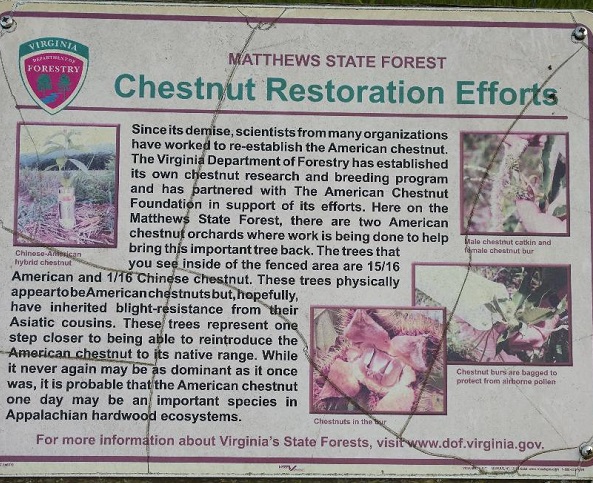“Chestnuts roasting on an open fire, Jack Frost nipping at your nose …”
When you hear Nat King Cole crooning those lines from “The Christmas Song” you know it’s the holiday season, but probably not because your family has a tradition of roasting chestnuts at Christmas. It’s because the song has become one of the many Christmas classics played over and over throughout shopping malls and supermarkets during the month of December, and on radio stations playing 24-hour loops of Christmas music.
However, when Robert Wells and Mel Torme wrote “The Christmas Song” in 1945, it was highly likely they actually did roast chestnuts at Christmas time, or grew up doing it with their families.
The American Chestnut was once a towering giant in the forests of the eastern United States, growing from Maine to Alabama and in some places making up more than half of the biomass of the forests. The trees were not only fast growing with a wood that was rot resistant, they also produce the namesake chestnuts — a nutritious food source rich in Vitamin C and antioxidants. According to The American Chestnut Foundation, nut gathering time occurred in the late fall and early winter. Railroad cars overflowed with chestnuts, being distributed to shops around the country just in time for holiday gatherings.
Ironically, just as the “Christmas Song” was gaining popularity, the American Chestnut tree was disappearing from our forests. A blight introduced in the northeast in the late 1800s started killing the trees. Over the course of a few decades it made its way south, and by 1950, the American Chestnut tree was practically eradicated from American forests.
At least, I thought it was destroyed.
Not long ago I had the opportunity to stay at the Alice House, a beautiful historic lodge located in Matthews State Forest. I decided to take a walk to explore a bit while waiting on Bill to arrive. It was just a typical walk in the mountains until I happened upon a large area, acres upon acres, completely fenced in. It looked like what people build around their gardens to keep the deer out, only on a much grander scale.
“What the heck are they protecting?” I thought, as I looked out on a somewhat scraggly field covered in well spaced-out young trees. Then I happened to see the signs lining the path up ahead. I had stumbled upon a grove of American Chestnuts, part of a reforestation effort by the Virginia Department of Forestry.
I could have been looking at a field full of unicorns, with the awe I felt standing next to a field of somewhat mythical trees.

Growing up I had heard of the chestnut trees. My grandparents and others of their generations told stories. We hardly took a drive through the mountains around my grandmother’s hometown of Brevard without someone bringing up “the blight.”
By the time I was born the American Chestnut had been gone from our forests for a couple of decades, but the impact of losing so many trees in such a relatively short timeframe made such a big impact that stories were still being told. The loss of the trees was not only environmental, the wood and nut harvest that had been critical to the Appalachian economy had just disappeared, and generations later people still vividly recalled that loss.
Now here I was, a species I thought had been wiped out entirely growing fiercely right before my eyes.
It turns out the blight kills the tree, but not the roots. So while the American Chestnut no longer grows to a full-size tree, it is not extinct. The living roots scattered throughout the forests of the mountains of the East Coast stubbornly put up sprouts each spring, and grow about as big as a shrub before succumbing to the fungus all over again.
The good news is scientists are doing research and field tests to try to bring the American Chestnut back to our forests. Here, in this grove at Matthews State Forest, the fenced-in trees are 15/16 American Chestnut and 1/16 Chinese Chestnut. The hope is that this hybrid will have all the great qualities of the American Chestnut – fast growing, straight, rot-resistant timber and plentiful nuts – while containing the blight resistance of the Chinese Chestnut.
What I was looking at wasn’t a field of some sort of mythical creature come to life. It was a symbol of hope. Amidst all the devastation years ago from the loss of the chestnut trees, the species has found a way to survive. And with the help of scientists, it might even thrive in our forests once more.


